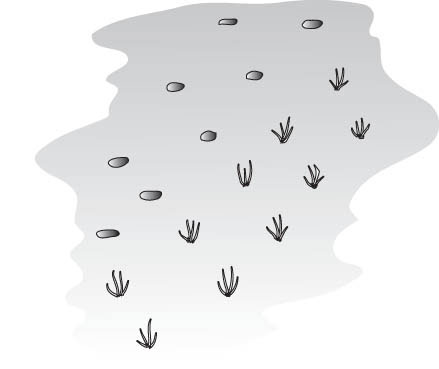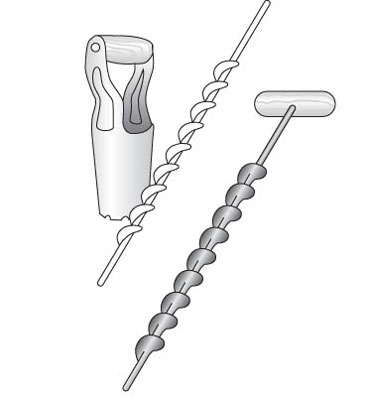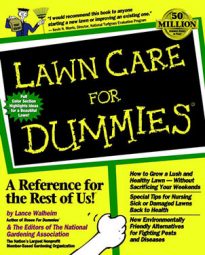One way to get your new lawn started is to plant plugs—a small, 2- to 3-inch-wide, -square or -round piece of sod. One thing’s for sure, planting plugs does save money. A square yard of sod provides 2,000 to 3,000 Bermuda grass or zoysia grass sprigs; 500 to 1,000 St. Augustine or centipede grass sprigs; 324 two-inch plugs; or approximately one bushel of sprigs. Depending on how you plant, you use anywhere from 2 to 10 bushels or 3,000 to 6,000 plugs to plant 1,000 square feet of lawn.
The downsides of using plugs are also substantial. First, the plants can take a long time to fill in, sometimes more than a year (planting very densely can save you some time) so you have to wait a while before you have a full lawn. While the lawn fills in, you have to keep the weeds out between the spaces, which can be a lot of work. Well, planting plugs is a lot of work, period — but so is laying sod.
Plugged lawns take longer to fill in. However, if you want a quicker fill-in, you can plant the plugs as close as 3 inches apart (any closer, and you might as well plant sod).
Like other planting techniques for warm-season grasses, late spring to early summer is the best time to plant plugs. The earlier you plant, the sooner the grass fills in. Don’t plant any later than two months prior to the average first frost date in fall. (Your nursery grower can tell you that date.) Otherwise, the grass may not be established before the onset of cool weather.
Planting small pieces of sod is usually a more reliable method than sprigging. A plug just has more roots and is easier to get established. You can cut your own plugs from sod or buy them growing in small plastic trays. Sizes usually range from 2 to 4 inches in diameter.
Plugs are usually planted in rows, with 6 to 12 inches between plants and between rows. Zoysia grass is usually planted about 6 inches apart because it is slower to establish. Stretch out a long string or rope to keep your rows straight — the whole thing looks better as the plugs fill in.

Use some type of bulb planter to simplify digging all the holes. Then set the plug in the hole and firm the soil around the sides. Level the ground with a rake and then roll with a water-filled roller.

After planting, keep the soil moist until the grass pieces become established. Keeping the plugs moist is the secret to success. Let them dry out just a little and you might as well start over from scratch. Lightly sprinkle at least once a day for the first week or two. In hot weather, you may have to water several times a day.

